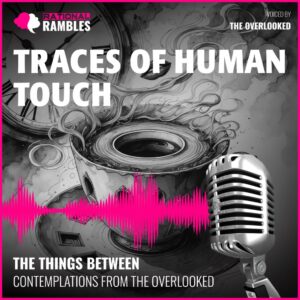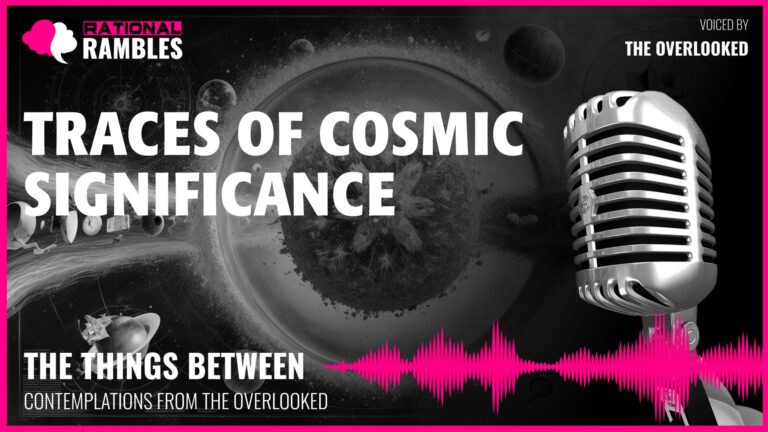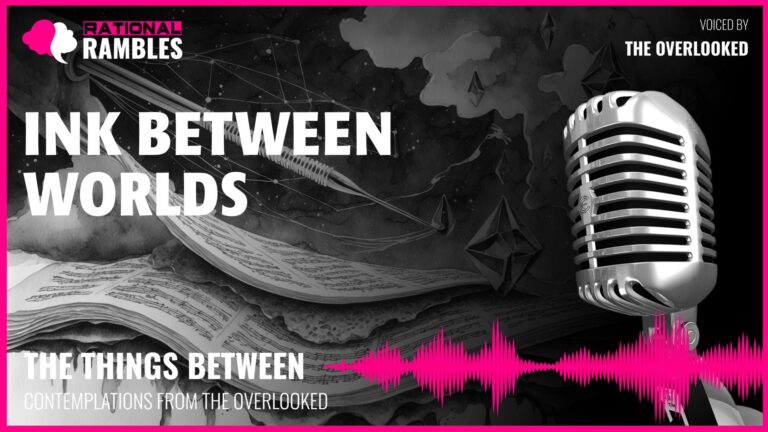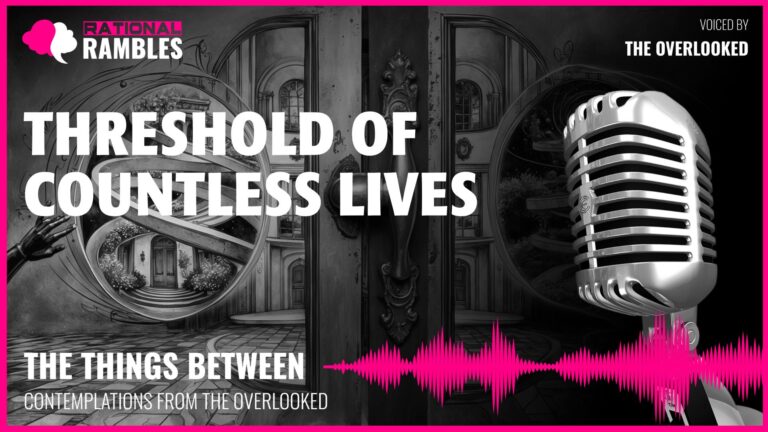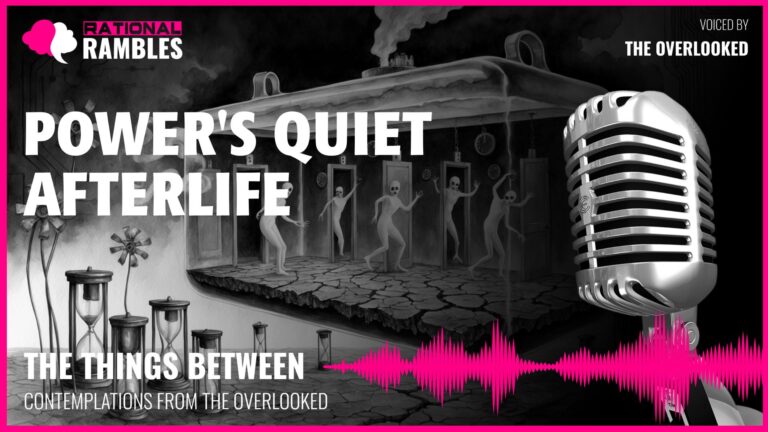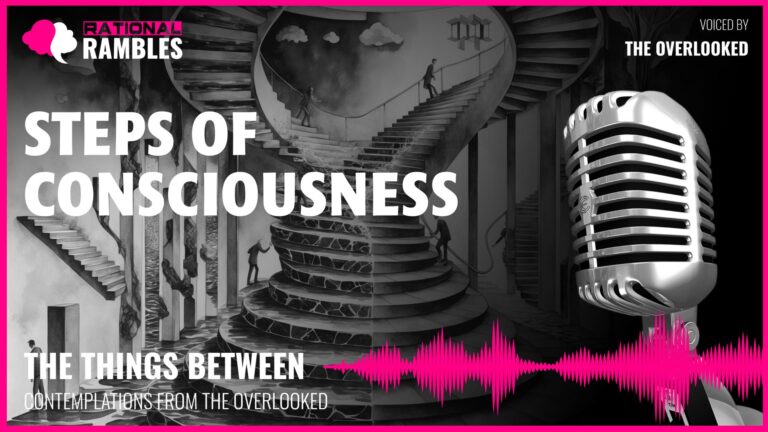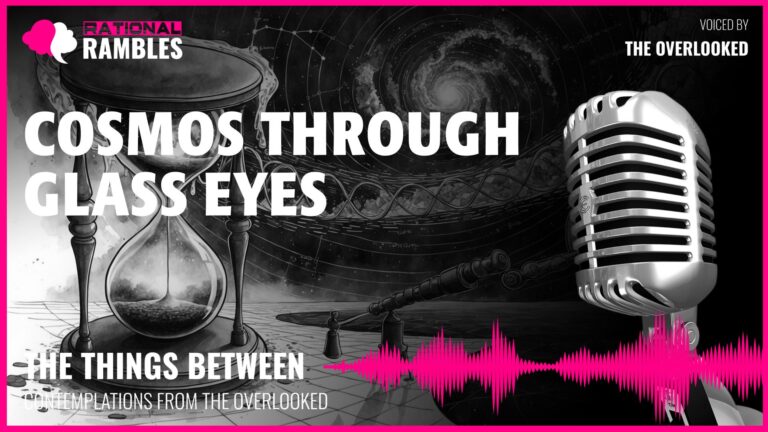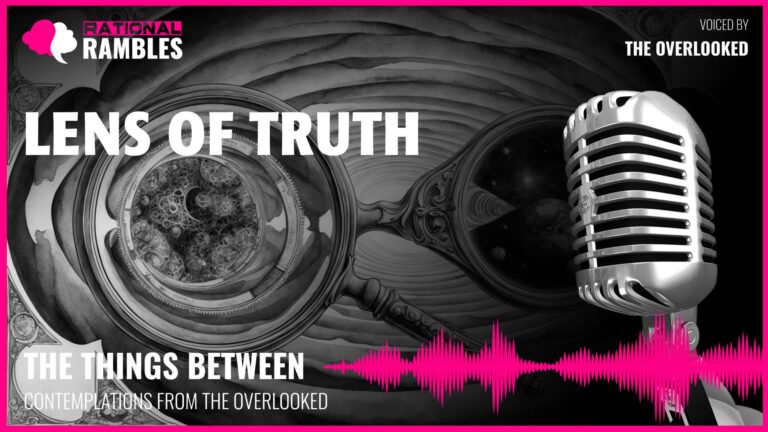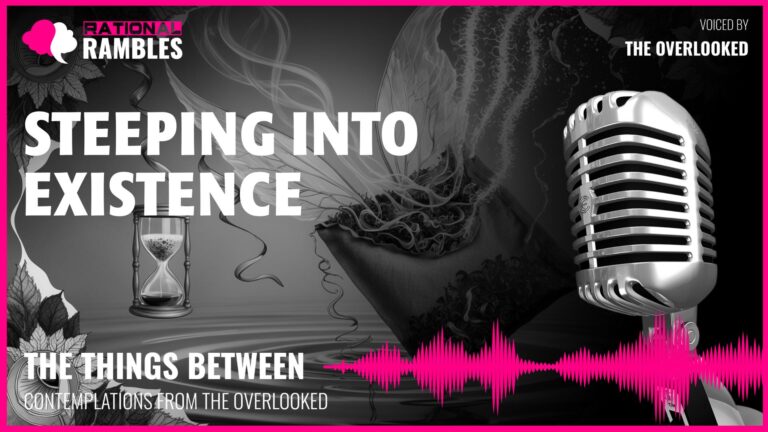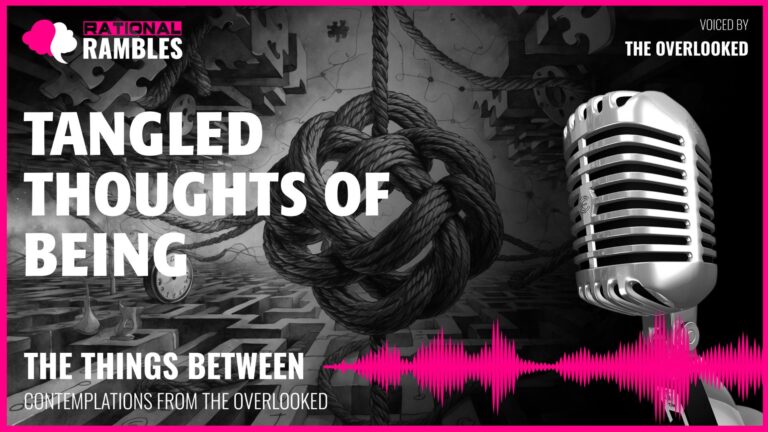The Intimacy of Traces: The Significance of Human Touch in Everyday Connections
Introduction
In the rhythm of our daily existence, we inhabit a world of tactile relationships that often escape our conscious awareness. The objects we touch, hold, and use become silent witnesses to our lives—repositories of our habits, emotions, and fleeting moments of connection. These material companions, through the marks we leave upon them and the ways we interact with them, become imbued with significance that transcends their utilitarian purpose. They become, in a sense, extensions of ourselves, carrying the imprints of our existence long after our touch has faded.
This article explores the philosophical dimensions of the traces we leave behind—particularly those intimate, often unnoticed marks like fingerprints, lipstick stains, or worn surfaces that speak to our presence in the world. Through examining these physical manifestations of human contact, we encounter profound questions about intimacy, ritual, memory, and the very nature of our being-in-the-world. What does it mean to leave a mark? How do everyday objects mediate our experience of time, relationships, and our own mortality? And why do certain items become imbued with meaning while others remain mere utilities?
By investigating the significance of human touch and the traces it leaves behind, we may discover that these seemingly mundane interactions offer insights into some of our deepest philosophical concerns: the nature of consciousness, the formation of identity through interaction, the poignancy of impermanence, and the human need to leave evidence of our existence. In the simple act of touching and being touched, we enact a profound existential drama that speaks to what it means to be human.
The Phenomenology of Touch
Touch represents our most primal and immediate connection to the world. Unlike our other senses, touch cannot be turned off; we are always in contact with something, always feeling our way through existence. The philosopher Maurice Merleau-Ponty described the body as our “vehicle of being in the world,” emphasizing that our tactile engagement with objects is fundamental to our understanding of reality. When we touch something, we simultaneously experience being touched by it—a reciprocity that blurs the boundaries between subject and object.
The Duality of Touching and Being Touched
There is a curious doubling that occurs in the act of touch. As Jean-Paul Sartre noted, when one hand touches another, we experience both the sensation of touching and being touched. This simultaneous experience reveals something profound about our embodied existence—we are both subjects who perceive and objects that can be perceived. This duality extends to our interactions with everyday objects. When we hold a cup, we feel its contours, temperature, and texture, but the cup also “feels” us—it receives our warmth, our pressure, our subtle variations in grip.
This reciprocal relationship with objects challenges the strict subject-object dichotomy that has dominated much of Western philosophy. Martin Heidegger’s concept of “ready-to-hand” (Zuhandenheit) describes how objects recede from our explicit awareness when we use them skillfully—the cup disappears as we drink from it, becoming an extension of our embodied action rather than a separate entity. It is only when something interrupts this flow—when the cup chips or feels unusually hot—that it emerges into our consciousness as a distinct “present-at-hand” (Vorhandenheit) object.
Touch as Connection and Knowledge
Touch provides us with knowledge that is distinct from visual or intellectual understanding. It offers what philosophers call “tacit knowledge”—understanding that cannot be fully articulated but is nonetheless real and meaningful. When we recognize a familiar cup by its feel in the dark, or instinctively know how much pressure to apply when handling a delicate object, we are drawing on embodied knowledge acquired through repeated physical interaction.
Feminist philosopher Luce Irigaray has argued that Western philosophy has privileged vision over touch, contributing to an objective, distanced approach to knowledge that separates knower from known. Touch, by contrast, requires proximity and involvement. It is inherently intimate, breaking down the illusion of detached observation. When we touch an object that holds personal significance—a wedding ring, a handwritten letter, a cup with a lipstick stain—we engage with it not as neutral observers but as participants in a shared history.
The Semiotics of Traces
The marks we leave on objects—fingerprints, lipstick stains, worn surfaces—function as signs within a complex system of meaning. These traces operate as a form of unintentional communication, speaking silently of our presence, habits, and interactions. Like linguistic signs, physical traces point beyond themselves to something absent: the person who left them, the moment of contact that has now passed.
Traces as Signs of Presence and Absence
Jacques Derrida’s concept of the “trace” offers a framework for understanding these marks. For Derrida, every sign contains traces of what it is not, pointing to absences as much as presences. The lipstick mark on a coffee cup simultaneously indicates a presence (someone was here) and an absence (they are no longer drinking from the cup). This dual nature of the trace creates a temporal complexity—it exists in the present but speaks of the past while implying possible futures (the cup will be used again, the mark will be washed away).
This temporality of traces connects to Martin Heidegger’s concept of “historicity,” the way human existence is always already situated within a historical context that shapes our understanding. The worn spot on a wooden handle or the faded pattern on a favorite mug represents an accumulated history of use—a material manifestation of temporality itself. These traces become what anthropologist Igor Kopytoff might call the “biography” of an object, recording its journey through time and relationship with humans.
Reading the Unwritten Language of Objects
The traces we leave on objects form a kind of unwritten language that can be “read” by those attuned to its subtleties. A criminologist examines fingerprints left at a crime scene, an archaeologist studies wear patterns on ancient tools, a lover notices lipstick on a glass—each interpreting these physical marks as meaningful signs. Roland Barthes, in his exploration of photography, discussed the “punctum”—the detail that pricks us, wounds us, in an image. The traces on everyday objects can function similarly, catching our attention and evoking emotional responses through their particularity.
These material signs often communicate what words cannot. They exist in a pre-linguistic realm of meaning, operating on us affectively before we consciously interpret them. When someone notices that a book falls open to a particular page—evidence of another reader’s frequent return to that passage—they encounter a form of communication that is immediate and embodied rather than abstract and conceptual.
The semiotics of traces also involves what is not marked. The absence of traces can be as significant as their presence—a pristine object may indicate lack of use, careful handling, or deliberate preservation. The pattern of what is touched and what remains untouched tells its own story about human priorities, habits, and relationships.
Ritual and the Rhythm of Everyday Life
Human existence is structured by rituals, from elaborate religious ceremonies to the humble routine of morning coffee. These repeated patterns of behavior create a framework of meaning that helps us navigate the chaos of existence. Anthropologist Mary Douglas defined ritual as “symbolic action related to the unseen,” suggesting that even seemingly mundane routines connect us to broader systems of meaning beyond their practical function.
The Sacred in the Mundane
Philosopher Mircea Eliade distinguished between sacred and profane time, with sacred time representing a breaking through of the eternal into ordinary chronological experience. While Eliade focused on explicitly religious contexts, we might extend his insight to recognize how everyday rituals can create moments of heightened significance within the flow of ordinary time. The morning ritual of preparing coffee, choosing a favorite cup, and taking that first contemplative sip can function as a small consecration of the day—a moment set apart from purely utilitarian time.
These micro-rituals often involve physical objects that serve as anchors for meaning. The specific cup chosen for morning coffee, the particular way it is held, the consistent place where lipstick touches its rim—these material elements of ritual provide tangible connection to abstract values like comfort, contemplation, or self-care. As philosopher Albert Borgmann has argued in his concept of “focal practices,” engagement with physical things can counter the disembodied nature of modern life, grounding our experience in material reality.
Habits, Routines, and the Ordering of Existence
William James famously described habit as “the enormous flywheel of society,” emphasizing how repeated actions create stability in human life. Our habitual interactions with objects—the way we hold them, use them, care for them—create a structure that allows us to navigate the world without constantly making conscious decisions. These embodied habits form what Pierre Bourdieu called “habitus”—internalized dispositions that shape our practices and perceptions below the level of conscious awareness.
The consistency with which we interact with familiar objects provides a sense of continuity amid life’s changes. A woman who drinks from the same cup each morning, leaving her lipstick in the same spot, creates a small island of predictability in an uncertain world. This continuity extends across time, allowing us to recognize ourselves as the same being despite constant change—what philosopher Paul Ricoeur called “narrative identity,” the sense of selfhood created through the stories we tell (and enact) about ourselves.
Yet rituals also mark time’s passage. Each repetition is both the same and different—the same actions performed by a slightly changed person in slightly changed circumstances. This tension between sameness and difference creates what philosopher Hans-Georg Gadamer might recognize as a “fusion of horizons,” where past and present meet in a moment of understanding that acknowledges both continuity and transformation.
Intimacy and the Ethics of Connection
The traces we leave on objects—and the objects that bear our marks—participate in complex webs of intimacy. They mediate our relationships with others and with ourselves, creating physical manifestations of connection that persist beyond moments of direct contact. These material intimacies raise questions about the nature of relationship itself and the ethical dimensions of our engagement with both human and non-human entities.
The Materiality of Intimacy
Intimacy is commonly understood as a quality of human relationships, particularly those involving physical or emotional closeness. Yet our intimate connections are often mediated through objects. The shared coffee cup, passed between lovers and bearing the imprint of lips; the heirloom passed through generations, carrying the touch of ancestors; the favorite mug that knows our morning self better than most humans do—these material things facilitate and sometimes stand in for direct human connection.
Philosopher Martin Buber distinguished between “I-It” relationships, in which we treat others as objects to be used, and “I-Thou” relationships, in which we encounter others in their full uniqueness and mystery. While Buber primarily applied this distinction to human relationships, we might consider how our engagement with certain objects sometimes approaches an “I-Thou” quality. The cup that has been held through life’s joys and sorrows, that bears the marks of our existence, may be encountered not merely as a tool but as a presence with its own kind of being.
This recognition challenges the sharp distinction between persons and things that has characterized much of modern ethics. As Jane Bennett argues in her work on “vibrant materialism,” acknowledging the active role of non-human entities in our lives may lead to more nuanced ethical positions that recognize various forms of agency beyond the human.
Care, Attachment, and the Ethics of Use
Our relationships with everyday objects often involve practices of care—washing, repairing, preserving, displaying. These practices acknowledge what feminist philosopher Nel Noddings might recognize as the “ethics of care”—an approach that emphasizes relationships, context, and maintenance rather than abstract principles. When we carefully wash a favorite cup, preserving it for future use, we engage in a small act of care that recognizes the value of this particular object in our life-world.
Our attachments to objects raise questions about the proper place of material things in a good human life. Philosophers from the Stoics to Buddhism have warned against excessive attachment to possessions, suggesting that true freedom comes from non-attachment. Yet others, like Hannah Arendt, have emphasized the importance of a stable world of things that outlast individual human lives and provide continuity to human existence. The coffee cup with its history of lipstick marks occupies a middle ground in this debate—neither a luxury object of ostentation nor a purely functional tool stripped of meaning.
These material attachments also connect to mortality and loss. The traces we leave on objects will eventually outlast us, raising questions about what remains of a person after death. As philosopher Jacques Derrida explored in his later work on mourning, the objects associated with those we have lost become sites of complex emotion—simultaneously preserving connection and emphasizing absence. The cup that bears the marks of someone no longer present becomes both comfort and wound.
Identity, Memory, and the Autobiographical Object
Objects that bear our traces become repositories of identity and memory. They participate in what philosophers and cognitive scientists call “extended mind” or “distributed cognition”—the idea that human thinking extends beyond the boundaries of the brain to include environmental supports. The marks we leave on objects, and our interactions with these marked objects, contribute to our sense of self and our understanding of our own life narratives.
The Extended Self
Philosopher Andy Clark has argued that humans are “natural-born cyborgs” who routinely incorporate external objects into their cognitive systems. The frequently used cup becomes part of this extended cognitive apparatus—not merely a tool but a component of the system through which we understand and navigate the world. As we leave our marks on objects and objects bear the impact of our use, the boundary between self and not-self becomes permeable.
This material extension of selfhood connects to what anthropologist Daniel Miller calls the “humility of things”—the way objects shape our lives while remaining in the background of awareness. The cup that has conformed to our grip through repeated use, or that bears the specific placement of our lipstick mark, quietly participates in our self-construction. These objects become what psychologist Mihaly Csikszentmihalyi calls “symbolic externalization of the self”—physical manifestations of identity that help us maintain a coherent sense of who we are across time and changing circumstances.
The marks we leave on objects also participate in what philosopher Paul Ricoeur called “narrative identity”—the understanding of selfhood as constructed through the stories we tell about ourselves. The worn pattern on a favorite mug or the consistent placement of lipstick becomes part of the material narrative of a life, physically embodying the repetitions and variations that characterize human existence.
Memory, Objects, and Emotion
Objects that bear our traces function as what philosopher Maurice Halbwachs might recognize as frameworks for “collective memory” and what neuroscientist Daniel Schacter calls “memory cues”—physical triggers that activate remembrance. The lipstick mark on a cup can evoke not just the coffee ritual itself but associated memories of conversations had, decisions made, or emotions experienced while holding that cup.
This connection between objects and memory has been explored by Marcel Proust in his famous madeleine scene in “In Search of Lost Time,” where the taste of a cookie dipped in tea involuntarily triggers a flood of memories. Philosopher Edward Casey, in his work on place memory, describes how physical environments and objects support what he calls “body memory”—a form of remembering that is not primarily conceptual but embodied and often prereflective.
Objects marked by our use also carry emotional significance. The concept of “emotional objects,” developed by sociologist Sherry Turkle, recognizes how certain items become linked to particular emotional states or relationships. The cup that has been held during moments of both joy and sorrow becomes what anthropologist Janet Hoskins might call a “biographical object”—an item that has accumulated a life story parallel to and intertwined with our own.
Impermanence and the Poetics of Traces
The traces we leave on objects exist in tension between permanence and impermanence. Lipstick marks are washed away, yet through repetition leave lasting memories; objects endure beyond individual moments of use yet are themselves subject to decay and eventual destruction. This tension mirrors broader philosophical concerns with time, transience, and the human desire for lasting significance.
The Beauty of Impermanence
Japanese aesthetics offers the concept of “mono no aware”—the pathos of things—which finds beauty in the transience of existence. The lipstick mark that will be washed away, the gradual fading of a pattern through repeated use, the chip that gives a cup character—these manifestations of impermanence can be appreciated not despite but because of their ephemeral nature. This aesthetic sensibility connects to Buddhist philosophy’s emphasis on impermanence (anicca) as a fundamental characteristic of existence.
Philosopher Martin Heidegger’s concept of “being-toward-death” (Sein-zum-Tode) suggests that authentic existence requires acknowledging our finite temporal nature. The traces we leave on objects—temporary yet recurring, ultimately destined for erasure—offer a material meditation on this finitude. Each lipstick mark that will be washed away enacts in miniature the larger pattern of human existence: appearance, presence, disappearance.
Yet there is also what philosopher Ernst Bloch might call a “principle of hope” in these renewable traces. The cup that is washed clean becomes ready for tomorrow’s mark, suggesting cycles of renewal rather than simple loss. This tension between erasure and renewal speaks to larger philosophical questions about whether meaning is found in permanence or in the continual creation of significance within transience.
Traces as Poetic Language
The marks we leave on objects constitute a kind of poetic language—communicating through suggestion, implication, and material metaphor rather than direct statement. Philosopher Gaston Bachelard, in his “Poetics of Space,” explored how material objects and spaces speak to our imagination and emotional life in ways that transcend their physical properties. The lipstick mark on a cup is simultaneously a mundane physical fact and a potent symbol of presence, intimacy, and the body’s interaction with the world.
This poetic dimension of traces connects to what anthropologist Claude Lévi-Strauss called “bricolage”—the creation of meaning through rearrangement and recontextualization of available materials. The accumulation of marks, scratches, and signs of use on a beloved object creates a physical poem of sorts, a material text that speaks of relationship, history, and embodied existence.
Philosopher Walter Benjamin’s concept of the “aura” of authentic objects—their unique existence in time and space—helps explain why original traces hold such powerful appeal. The actual cup with its actual marks connects us to real moments of contact in a way that a photograph or description cannot. This material authenticity creates what Benjamin might recognize as a form of “profane illumination”—moments of insight arising not from transcendent revelation but from close attention to the concrete details of everyday existence.
Consciousness, Thingness, and Being
Our relationships with objects that bear our traces raise profound ontological questions about the nature of consciousness, the boundaries between animate and inanimate, and the fundamental character of being itself. The intimate connection between humans and their material companions suggests possibilities for understanding consciousness as relational rather than confined to individual minds.
The Question of Object Consciousness
While traditional Western philosophy has generally restricted consciousness to humans (and sometimes other animals), various philosophical traditions have entertained broader conceptions. Panpsychism—the view that consciousness or mind is a fundamental feature of the physical world—has adherents ranging from pre-Socratic philosophers to contemporary thinkers like David Chalmers and Galen Strawson. While few would claim that cups possess consciousness in the human sense, our habit of attributing awareness to frequently used objects (“this cup knows how I like my coffee”) suggests an intuitive recognition of something like responsiveness or attunement in the material world.
Martin Heidegger distinguished between objects as present-at-hand (Vorhanden)—observed from a theoretical distance—and ready-to-hand (Zuhanden)—encountered through practical engagement. The cup that has adjusted to our grip through use exists primarily in this latter mode, as an extension of our embodied action rather than a separate entity. This suggests that “thingness” itself is not a fixed quality but a mode of relationship that emerges through interaction.
Contemporary philosopher Jane Bennett’s concept of “thing-power” recognizes the agency of nonhuman entities—their capacity to act as forces with effects in the world. The cup that holds our coffee, bears our lipstick marks, and evokes our memories is not merely passive but participates in what Bennett might call “vibrant matter,” exerting its own kind of agency within the human-object assemblage.
Consciousness as Relationship
Rather than asking whether objects possess consciousness in themselves, we might consider how consciousness emerges within relationships between entities. Philosophers in the enactivist tradition like Evan Thompson argue that consciousness is not located “inside the head” but arises through an organism’s dynamic engagement with its environment. Extended to human-object relations, this suggests that the meaning and even the being of both human and cup emerge through their interaction—neither exists in quite the same way outside their relationship.
Indigenous philosophical traditions often emphasize what might be called a “relational ontology”—an understanding of being that prioritizes relationships over independent entities. In such frameworks, as philosopher Graham Harvey notes, things are not defined by inherent properties but by their places within webs of relationship. The cup with its lipstick marks exists within such a web—connected to the person who uses it, the rituals it participates in, the memories it holds, and the cultural meanings it embodies.
This relational perspective connects to philosopher Maurice Merleau-Ponty’s concept of “flesh” (chair)—his term for the fundamental stuff of being that precedes the separation into subject and object. The interaction between person and cup occurs within this shared “flesh of the world,” making their connection not merely external or accidental but intrinsic to their being. The lipstick mark is neither fully of the person nor fully of the cup, but exists at their intersection, challenging the neat boundaries we typically assume between self and world.
Conclusion: The Ethics and Aesthetics of Leaving Traces
Our exploration of the traces we leave on everyday objects—those marks of use, wear, and intimate contact like lipstick on a coffee cup—reveals the profound philosophical dimensions of seemingly mundane interactions. These material interfaces between human and object offer insights into fundamental questions about existence, consciousness, meaning, memory, and our place in a world of things.
The significance of these traces extends beyond mere sentimentality. They constitute a form of unwritten autobiography, a material record of our embodied existence that speaks to our fundamental need to leave evidence of our presence in the world. As philosopher Hannah Arendt observed, humans create durable objects partly to establish stability in a world characterized by biological and temporal flux. The marks we leave—even temporary ones like lipstick stains that will be washed away—participate in this project of creating meaningful permanence within impermanence.
These material traces also speak to what philosopher Emmanuel Levinas might recognize as an “ethics of the face”—the way in which encountering another calls us to ethical response. The cup that bears our marks has, in a sense, “faced” us, received our impression, and holds something of our being. This suggests an expanded ethical consideration that encompasses not only human others but also the material companions that support and witness our existence.
At the same time, the aesthetic dimension of these traces—their beauty as signs of use, age, and relationship—offers what philosopher John Dewey called “an experience,” a heightened awareness of meaning within ordinary existence. The Japanese concept of wabi-sabi—finding beauty in imperfection, impermanence, and incompleteness—helps us appreciate the poignancy of these material records of our passing presence.
Perhaps most fundamentally, these traces remind us of our existential situation as beings who are simultaneously material and meaning-making, embedded in time yet reaching toward permanence, separate yet fundamentally connected. The lipstick mark on a coffee cup—ordinary, overlooked, ephemeral—contains within it this entire drama of human existence: our need to leave marks, to establish connection, to create significance within transience, and to be witnessed in our brief passage through the world.
In attending to these humble traces, we practice what philosopher Pierre Hadot called “spiritual exercises”—ways of shifting perception to see the extraordinary within the ordinary. We recognize that philosophy is not merely an abstract intellectual pursuit but a practice of attentive living that finds meaning in the texture of everyday existence. The coffee cup with its lipstick mark becomes, in this light, not merely an object of use but a site of insight—a small mirror reflecting the largest questions of what it means to be human.


